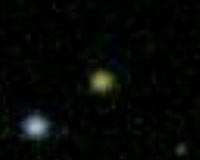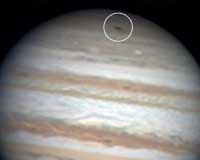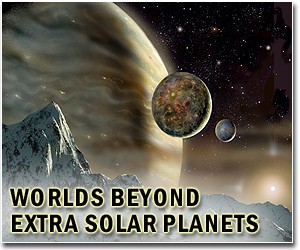|
 3-D Computer Simulations Help Envision Supernovae Explosions
3-D Computer Simulations Help Envision Supernovae ExplosionsPrinceton NJ (SPX) Sep 17, 2010 For scientists, supernovae are true superstars - massive explosions of huge, dying stars that shine light on the shape and fate of the universe. For a brief burst of time, supernovae can radiate more energy than the sun will emit in its lifetime. With the potential energy of 25 hundred trillion trillion nuclear weapons, they can outshine entire galaxies, producing some of the biggest explosions ever seen, and helping track distances across the cosmos. Now, a Princeton-led team has found a wa ... read more |
. |
|
|
Free Space, Earth, Energy And Military Newsletters - Delivered Daily |
| . | . |
| .. |
Supernova Shrapnel Found In Meteorite Chicago IL (SPX) Sep 13, 2010
Chicago IL (SPX) Sep 13, 2010Scientists have identified the microscopic shrapnel of a nearby star that exploded just before or during the birth of the solar system 4.5 billion years ago. Faint traces of the supernova, found in a meteorite, account for the mysterious variations in the chemical fingerprint of chromium found from one planet and meteorite to another. University of Chicago cosmochemist Nicolas Dauphas and ... more Scientists find 'rubble pile' asteroids  Tel Aviv, Israel (UPI) Sep 13, 2010
Tel Aviv, Israel (UPI) Sep 13, 2010 Asteroids made of gravel-sized rocks held together by gravity could hit the Earth like a shotgun blast rather than a single cannonball, Israeli researchers say. It was long theorized that these "rubble pile" asteroids, if they spun fast enough, could throw off material through centrifugal force to create a second collection of rocks - a "separated" twin - that would spin around the su ... more This Planet Smells Funny  Huntsville AL (SPX) Sep 14, 2010
Huntsville AL (SPX) Sep 14, 2010Giant planet GJ 436b in the constellation Leo is missing something. Would you believe swamp gas? To the surprise of astronomers who have been studying the Neptune-sized planet using NASA's Spitzer Space Telescope, GJ 436b has very little methane (CH4). "Methane should be abundant on a planet of this temperature and size, but we found 7000 times less methane than what the models predict," s ... more |
.. |
 Astronomer Unveils Mysteries Of "Green Pea" Galaxies  Amateur Astronomers Open Potential Lab In Outer Space For Planetary Scientists  Instant online solar energy quotes Solar Energy Solutions from ABC Solar |
.. |
|
|
Free Space, Earth, Energy And Military Newsletters - Delivered Daily |
|
|
. |
 Scientists looking to spot alien oceans
Scientists looking to spot alien oceansSeattle (UPI) Sep 9, 2010 A U.S. space telescope set for launch in 2014 could reveal the presence of oceans on planets outside the solar system, scientists say. Detecting water on Earth-like planets would offer the tantalizing prospect they could sustain life, and scientists hope the reflection of light, or "glint", from mirror-like ocean surfaces could be picked up by the upcoming generation of space telescopes, the BBC reported Thursday. Tyler Robinson at the University of Washington in Seattle said he thinks t ... read more |
| The contents herein, unless otherwise known to be public domain, are Copyright 1995-2010 - SpaceDaily. AFP and UPI Wire Stories are copyright Agence France-Presse and United Press International. ESA Portal Reports are copyright European Space Agency. All NASA sourced material is public domain. Additional copyrights may apply in whole or part to other bona fide parties. Advertising does not imply endorsement, agreement or approval of any opinions, statements or information provided by SpaceDaily on any web page published or hosted by SpaceDaily. Privacy statement |
| Previous Issues | Sep 16 | Sep 15 | Sep 14 | Sep 13 | Sep 10 |